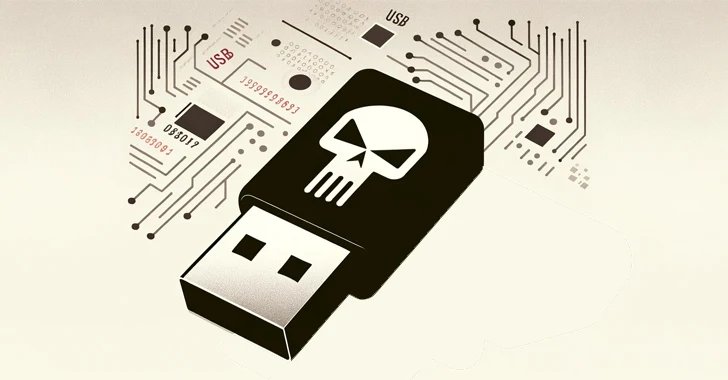A financially motivated threat actor known as UNC4990 is leveraging weaponized USB devices as an initial infection vector to target organizations in Italy using Cryptojacking Malware. Google-owned Mandiant said that the attacks single out multiple industries, including health, transportation, construction, and logistics. The attacks generally involve widespread USB infection followed by the deployment of the EMPTYSPACE downloader. During these operations, the cluster relies on third-party websites such as GitHub, Vimeo, and Ars Technica to host encoded additional stages, which it downloads and decodes via PowerShell early in the execution chain.
UNC4990, active since late 2020, is assessed to be operating out of Italy based on the extensive use of Italian infrastructure for command-and-control (C2) purposes. It’s currently not known if UNC4990 functions only as an initial access facilitator for other actors. The end goal of the threat actor is also not clear, although in one instance an open-source cryptocurrency miner is said to have been deployed after months of beaconing activity. Details of the campaign were previously documented by Fortgale and Yoroi in early December 2023, with the former tracking the adversary under the name Nebula Broker.
How does Cryptojacking Malware work?
The infection begins when a victim double-clicks on a malicious LNK shortcut file on a removable USB device, leading to the execution of a PowerShell script that’s responsible for downloading EMPTYSPACE (aka BrokerLoader or Vetta Loader) from a remote server via another intermedia PowerShell script hosted on Vimeo. Yoroi said it identified four different variants of EMPTYSPACE written in Golang, .NET, Node.js, and Python, which subsequently acts as a conduit for fetching next-stage payloads over HTTP from the C2 server, including a backdoor dubbed QUIETBOARD.
This cyberattack can have severe implications for Italian businesses, as they scramble to protect their data and systems from this form of high-tech intrusion. The infiltration vector, using USB drives, makes traditional cybersecurity measures, like firewalls and antivirus software, less effective, leaving businesses vulnerable to attack.
As cybercriminals become increasingly sophisticated, Italian companies will need to invest in robust cybersecurity systems and provide comprehensive training for employees on recognizing and preventing social engineering tactics. This attack serves as a reminder for all businesses to prioritize cybersecurity and regularly update their defenses to stay ahead of evolving cyber threats.
Future Impact
The weaponized USB cyberattack on Italian businesses is a concerning development with far-reaching implications. As cybercriminals continue to evolve their tactics and techniques, it’s likely that similar attacks will be seen in other countries as well. This highlights the need for international collaboration between cybersecurity experts to track and neutralize these threats effectively.
Additionally, the use of cryptocurrency mining malware in the attacks signifies a shifting landscape in cybercrime, where financial gain is the primary motivation. This trend is expected to continue, with malicious actors targeting organizations not just for data theft or ransomware, but also for cryptojacking.
Furthermore, the reliance on third-party websites to host encoded additional stages of the malware presents a challenge for traditional cybersecurity measures. As attackers continue to exploit legitimate platforms, it becomes increasingly difficult for businesses to distinguish between safe and compromised content.
In the long term, the Italian businesses affected by the Cryptojacking Malware attack may suffer reputational damage and financial losses. Restoring customer trust and recovering from the impact of the cyberattack will require concerted efforts from affected companies, potentially resulting in significant economic consequences for the nation.

Staying at the forefront of cybersecurity topics like Cryptojacking Malware is crucial for business survival and competitiveness. Keeping abreast of developments in areas like blockchain security, artificial intelligence in threat detection, and advanced encryption can provide businesses with a significant advantage in safeguarding their digital assets.
The digital landscape is witnessing a rapid rise in cyber threats, from data breaches to advanced persistent threats. These incidents not only cause financial damage but also erode public trust. It’s imperative that cybersecurity professionals and organizations work together to develop more resilient and adaptive security strategies to prevent these escalating risks.
I am dedicated to to share stories like on my website. This serves a dual purpose: firstly, to provide a valuable reference for my writing endeavors, and secondly, to share insightful narratives with the wider community.
If you like this story on Cryptojacking Malware you should check out some of the other stories in the Small Business
You can also find more of my Cybersecurity writings here in the Cybersecurity section
To check the original story Click here







